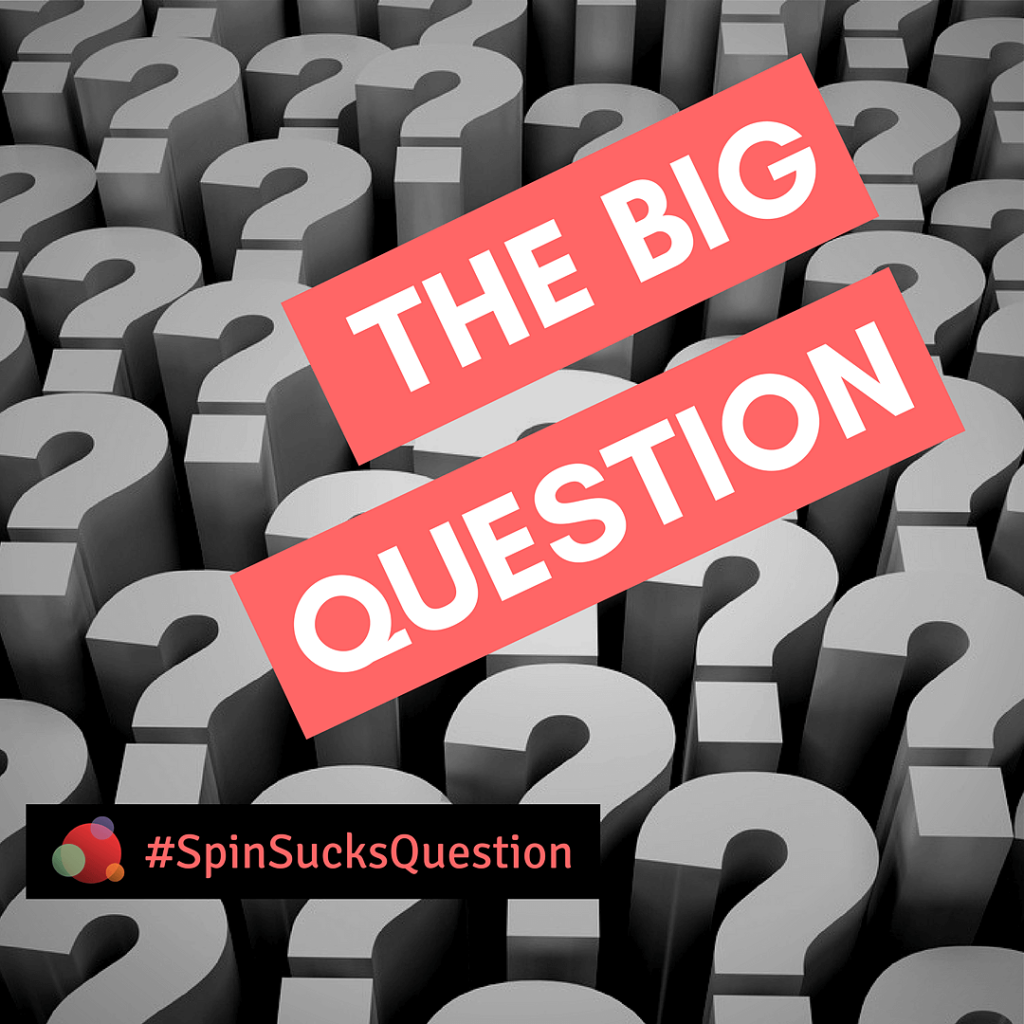 These days, it seems like everyone is an influencer.
These days, it seems like everyone is an influencer.
After all, their Twitter bio says they are, so they must be, right?
Maybe not.
Further, one brand’s top influencer may not drive an audience to take action.
Finding influencers your audience trusts is difficult, at best.
But doing so is the key to successfully finding the right influencers to partner with for PR activities.
That’s why for this week’s Big Question we asked:
What are your tips for finding influencers to partner with for PR activities?
Here’s what you said.
Focus on the Right Metrics
Engagement, not number of followers, is the primary metric to measure, says Josh von Scheiner:
Influence is not a function of distribution but rather a function of persuasion.
Identification therefore needs to focus on metrics of persuasion:
- Is there a history of true influence?
- When an influencer speaks about a given subject or topic, what reaction do we see?
- Are they cited in the media?
- Do other influencers reference their opinion?
- If they have a direct audience (like a social following), do they inspire an audience that mirrors our target audience to take some kind of measurable action?
Get to Know Your Potential Influencers
Natalie O’Grady counsels it takes time to finding influencers:
Before asking to collaborate or partner with an influencer, it’s important to build a relationship.
Follow them, read their blog, and watch their Instagram stories to see what they’re interested in.
Secondly, when searching for the right kind of influencer for your client try searching by hashtag on Twitter or Instagram.
For instance, if you’re looking for influencers around a restaurant opening in Portland you might search #Portlandfoodblogs or #PDXfoodbloggers related to find accounts with high followers and engagement.
True Influencers Drive Purchase, Not Just Pageviews
Maris Callahan spends time getting to understand the influencer’s content and ability to drive purchases:
Look at the big picture—engagement, niche, quality of content output, and reach all together.
Some brands use “blogger” and “influencer” interchangeably, but really an influencer should be anyone who influences purchasing power over a specific community and bloggers don’t always have that.
You don’t want to rely on pageviews or unique monthly visitors because it’s very easy to run ad campaigns and buy traffic.
These days bloggers have sharing groups where they all promote and share one another’s work in exchange for reciprocity. That kind of “influence” is purely manufactured and won’t have an impact on the brand’s bottom line.
Instead, look for individuals whose values, opinions, and perspectives are respected within your industry and bear meaning to your target audience.
I would also add the importance of quality over quantity.
I’d rather hire five quality influencers who reach a small but targeted community than 50 who reach millions of people who might not be relevant to my brand.
Social Listening Key to Finding Influencers
Bilal Kaiser shares the importance of using social listening to finding influencers:
My team has helped find and manage influencer relationships for global beauty brands hoping to support product launches, and emerging companies looking for social proof and support.
Before you contact a single influencer, put yourself in the mindset of your customer.
- Who does he/she pay attention to?
- Which media outlets are important?
- Which social accounts does he/she follow?
Figure out the right angle here, and only then start compiling potential contacts.
Just because an Instagrammer looks cute and has a large following doesn’t mean he/she will help you reach business objectives.
Track conversations around topics relevant to your business (e.g., for one of our beauty clients it might be #redlipstick) and see who is engaging in those conversations.
This will help you discover and identify potential influencer partners that are already (organically) having conversations that are important to your business—and your customers.
We use a tool called PeopleMap, which allows us to find, rank, and filter Instagram users, so we’re really only going after the “right” influencers (e.g., based on relevant engagement, follower count, etc.).
Don’t Focus Solely on Digital Influence
While it’s often easier to find online influencers, Alex Yong reminds us not to forget to go beyond digital influence.
Love the question. May I also point out that “social” has a duality, meaning there’s “Twitter and Facebook engagement”, “blog comments” etc. (you can think of this as digital) and on the flip side of that same social coin, there’s “in real life, in the flesh social” (easy for me to say and do because I live in Manhattan).
In many cases I assume it would behoove PR to also put at least some weight on the latter. (There are bloggers out there (even in NYC) with no real friends. Whether you want to work with them is up to you #JustSayin.)
I have an “in real life” social page to drive home the point that I’m not just a “digitally ‘social’ ” blogger—I’m also a hypersocial “in real life” blogger—I’m happy to say the page serves its purpose because I get a lot of invites from PR from it.
(Admittedly, it took awhile. The page wasn’t an overnight success.)
Next Week: Are Infographics Still Valuable PR Assets?
It used to be that including an infographic with your news release was a good way to drive coverage.
But as they’ve become a more frequently used tactic, has their effectiveness waned?
For next week’s Big Question, tell us what you think:
Are infographics still effective for PR?
You can answer here, in our Slack community, or on the socials (use #SpinSucksQuestion so we can find you).
If you answer the question and we feature your answer, you get a follow link to your site.
So get to answering!